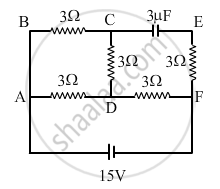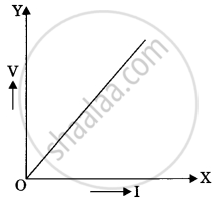Advertisements
Advertisements
प्रश्न
Keeping the p.d. constant, the resistance of a circuit is halved. The current will become:
(a) one-fourth
(b) four time
(c) half
(d) double
उत्तर
d) double
As we know from Ohm’s law:
Voltage = Current x Resistance
V = IR
If the voltage is constant, the resistance of the circuit is halved. That is, it becomes R / 2.
Current, I = V/R
I = V/R
I = V/R/2 = 2 I
Thus by keeping the p.d. constant, the resistance of a circuit is halved and the current is doubled.
APPEARS IN
संबंधित प्रश्न
An electrical bulb is marked 200V, 100W. Calculate the electrical resistance of its filament. If five such
bulbs are connected in series to a 200V supply, how much current will flow through them?
- Draw a V-I graph for a conductor obeying Ohm’s law.
- What does the slope of V–I graph for a conductor represent?
What is an ohmic resistor? Give one example of an ohmic resistor. Draw a graph to show its current voltage relationship. How is the resistance of the resistor determined from this graph?
A wire of resistance 9 ohm having length 30 cm is tripled on itself. What is its new resistance?
In the circuit shown in the figure, find the total resistance of the circuit and the current in the arm AD.

What is non ohmic device?
The slope of voltage (V) versus current (I) is called:

A student carries out an experiment and plots the V-I graph of three samples of nichrome wire with resistances R1, R2 and R3 respectively. Which of the following is hue?

You are provided with a resistor, a key, an ammeter, a voltmeter, four cells of 1.5 V each and few connecting wires. Using circuit components, draw a labelled circuit diagram to show the setup to study Ohm's law.
State the relationship between potential difference (V) across the resistor and the current (I) flowing through it. Also draw V-I graph, taking V on the X-axis.
What is meant by resistance of a conductor ? Define its SI unit.
